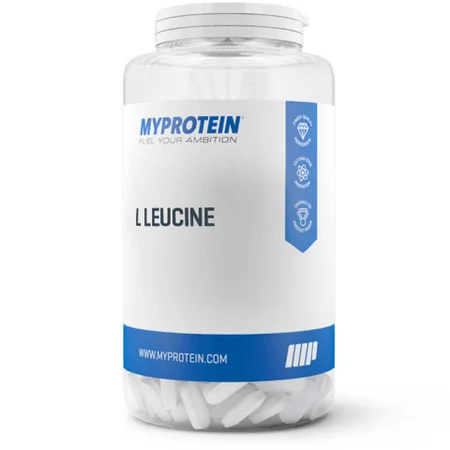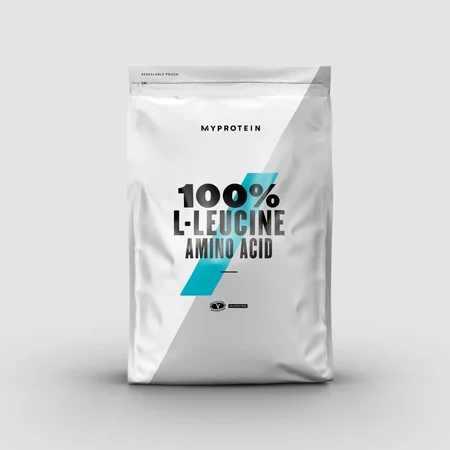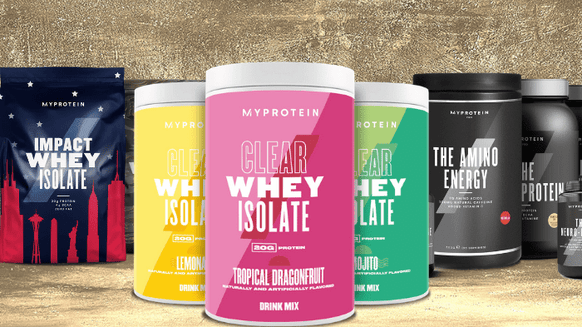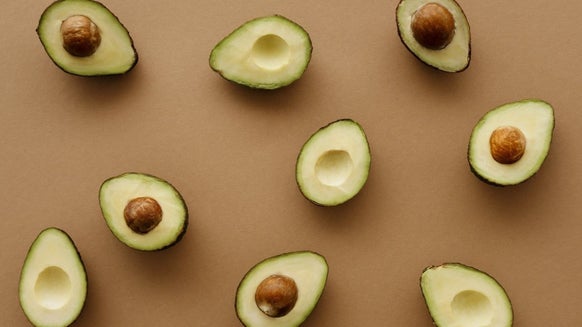
In the past half century the world has become fascinated with weight lifting and bettering ourselves through supplementation. We’ve learned quite a lot in these past few decades, and while training styles and techniques haven’t changed, our supplementation habits are always changing as we learn more and more about what we can consume to help us reach our goals.
What is Leucine?
In the wake of learning to supplement smarter, you might notice a lot of gym bros carrying around gallon jugs drinking a colorful beverage. More than likely what you’re seeing is three to six scoops of BCAAs (branch chain amino acids). Comprised of leucine, isoleucine and valine, these amino acids are essential, meaning our body cannot produce them on our own. The most important amino acid gym goers are interested in is leucine, the muscle protein synthesis powerhouse. This is the case because leucine is the main activator of mTOR, a protein directly related to MPS. Isoleucine and valine also stimulate mTOR, but to a much weaker degree, making straight leucine supplementation more than likely better for stimulating MPS than BCAAs on a gram for gram basis.
When looking at these compounds from the bigger picture, they all just seem to be a smaller broken down version of a different supplement or food. For example, you could eat chicken, which contains most essential amino acids and most importantly leucine. Or you could drink a whey isolate protein shake, which has all the same amino acids, but is broken down much quicker in your stomach to be used by your body. We can break it down even further by drinking a BCAA shake, that doesn’t even need to be broken down because they are already the raw amino acids and can be utilized almost immediately by the body to fuel muscle protein synthesis. Most lifters stop here, assuming that amino acids are the best and more efficient way to stimulate and preserve muscle mass.
You should try L-Leucine
What is HMB?
That all changed when a supplement called Beta-hydroxy-beta-methylbutyrate hit the market 20 years ago. HMB is a metabolite of leucine and is the most we can break down leucine (that we know of). Just about 5% of leucine is broken down into HMB in our body, and is the main compound that stops the breakdown of muscle (also known as catabolism). Once HMB was discovered, we quickly found a way to isolate it and sell it as a whole other supplement. But of course there was controversy surrounding HMB as it was touted as being “the next big thing” when it comes to muscle building.
When the first studies came out on HMB in animals, results were very good, with rats gaining much more lean mass than placebo groups. It wasn’t until the 21st century when more efficacious studies were conducted on human subjects and showed not so promising results. When compared to leucine, HMB was no better, and sometimes even worse at stimulating muscle protein synthesis. This came as a surprise to all the companies selling HMB as a “legal and safe” supplement yielding similar results to anabolic steroids. It didn’t help that HMB was being sold at a price almost twice as expensive as pure leucine, and once the studies came out showing how it was no improvement for MPS, companies began to drop the product from their shelves very quickly.
When To Use HMB And When To Use Leucine
Like most supplements that fade out of the limelight, HMB got its second wind when companies began advertising it as an anti-catabolic agent, rather than a muscle builder. After HMB took on a different form, and instead of being used by bodybuilders trying to get that extra edge on muscle building, it was being used from marathon runners to even the elderly. This is because HMB is 10-20 times more effective at preventing the breakdown of muscle than leucine. This supplement is even being taken advantage of by athletes with injuries, as muscle loss during recovery is always a real struggle.
For the average lifter, especially when dieting, muscle loss is more of an inconvenience than a real danger. But luckily if you didn’t already know about HMB, you should know by now it’s what you should be using! Knowing when and how much to use is important for success. The clinically effective dose is 1-3 grams a day, and while taking more won’t hurt you, it hasn’t been proven to yield better results. HMB is best taken before a workout, whether it be cardiovascular or weight training.
The type of HMB you take is also important as two exist:
1. The first is known as calcium HMB and takes about an hour to be broken down in your body after ingestion, peaking for another hour and a half then slowly returning to baseline levels nine hours later. What this means is the best time to take this form of HMB is an hour before your workout and you won’t need to take any intra-workout unless your routine is more than a few hours long.
2. The second form is known as free form HMB, and is already broken down for your body. All this means is you can take it 30 minutes or less before your workout and get the full effects. Once in your body, the time parameters are the same as calcium HMB, peaking for an hour and a half, until it reaches baseline nine hours later.
Now that you know when to use HMB, you might be asking, should I still take leucine? Yes, yes you should if you can afford it. While HMB is best taken before a workout to prevent muscle loss, leucine or a high quality BCAA should be taken after your workout to help with muscle protein synthesis. The same dosage of 3 grams of leucine is adequate for stimulating MPS. You can enjoy a BCAA shake during your workout but don’t think it’s required to make all kinds of gains.
Take Home Message
Of course it should go without saying that both of these supplements are far from essential to make great strength and size gains when bulking or to keep most of your muscle when cutting. If you’re on a limited budget and you have to choose between an extra meal of chicken and rice or a container of BCAA’s, I advocate the real food any day of the week. The chicken has more than enough amino acids to stimulate proper growth and the rice will give you clean energy to destroy your workout. Its only when you have supplemental income to spend on…well supplements, to give you that extra 1%. And that really is the difference it will make, no more than 1% while proper nutrition and training is the other 99%. For most casual lifters we won’t even notice the 1%, it’s once the rest of the 99% is under control that these supplements will make a noticeable difference.
With that being said, leucine and HMB are good additions for anybody trying to lose that extra pound of fat, whether it be switching your post workout shake for a BCAA shake to stimulate muscle protein synthesis, or using HMB before fasted cardio to maximize fat burn and preserve muscle. As we wrap this article up I’d like to say thank you for taking the time to hopefully learn something new and good luck with your goals!










